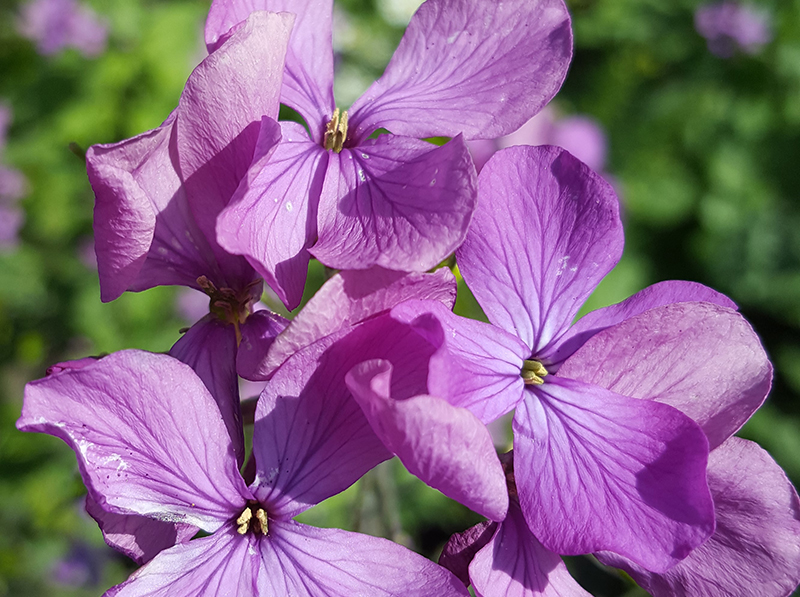Plant history
Lunaria Annua has been a recognised ornamental plant across the globe for many years. In the UK it is more commonly known as ‘honesty’ and its attractive white and violet flowers have added vivid colour to garden borders across the country for centuries.
Lunaria literally translates to mean’ moon-shaped’ and is related to the shape of the seed pods. Over the growing season, as the plant matures and dries, the pods change colour from green to silver and begin to resemble silver coins. This has led to the plant also being called the ‘money plant’ or ‘Silver Dollar plant’ and even the ‘Chinese money plant’.
Production cycle
Lunaria grows well in the rich fertile soil and the temperate climate along the east coast of England, specifically in south Lincolnshire and Essex It is a ‘biennial’ plant which means that the ‘soil to oil’ process can take up to 2 years.
Crop R&D has determined that the optimum time for planting In the UK is in the late Spring; harvest taking place in July of the following year. The crop is in full bloom between May and June.
Ecological sustainability and impact
Lunaria requires very limited treatment during the production cycle, meaning that it has a low environmental impact. It is grown using the highest agricultural standards and is covered by the Red Tractor Scheme. But what’s more crucial is that Lunaria recognised by the Royal Horticultural Society as being of benefit to the local insect population, as it is perfect for pollinators. Thus, we can include Lunaria in our collection of bee friendly oil crops which had a positive impact on the local environment.
We convert the seed into oil within 200 miles of the farm, this means Lunaria has a low carbon footprint and in turn the oil has superior freshness.
Oil production method
Lunaria seeds are first cleaned and dried to before being physically pressed. The cold pressed oil is then filtered leading to a golden yellow oil with a light, sweet herbal odour. All of this enables us to register the material as ECOCERT/COSMOS Natural.

Lunaria seed oil composition
In the 1990’s UK lipid researchers began to study the oil contained in the brown disc shaped seeds harvested from trial crops of Lunaria.
Not only did they find that the seeds contained a good amount of oil (around 27-33%), they also discovered that is had a very special lipid profile. Lunaria oil has a unique lipid composition unlike any other. In addition to the more commonly available, skin-friendly oleic acid, it also contains around 25% of the rarer and more functional long chain nervonic acid (C 24:1).
Nervonic Acid, molecular formula C24H46O2, is a long chain mono-unsaturated fatty acid which is part of the cerebroside family of fatty acids. These fatty acids are believed to have potential in the clinical treatment of a number or neurological disorders, although it is is its value as a skin care ingredient that is the focus of our attention these days.
Oil stability
Independent lab tests, which subjected the oil to accelerated oxidation stress at 100°C show that Lunaria oil has far superior stability to most other natural oils used in skin and hair care. This in turn means that the oil has a shelf life of at least 2 years whilst stored correctly and is less likely to cause stability issues when used in skin care formulations.
Skin care applications
Independent skin studies commissioned by Northstar have so far concluded that Lunaria Oil:
- Has a rich and luxurious skin feel
- Provides enhanced slip whilst being readily absorbed
- Is an effective natural moisturiser, improving skin hydration and barrier function
- Improves skin firmness and elasticity
- Improves the appearance of facial fine lines and wrinkles and can be considered for use in anti-ageing formulations
- Is suitable for sensitive skin and infant skin care
- Helps improve scalp condition and hair sheen, making it an excellent natural conditioner and relaxer.
